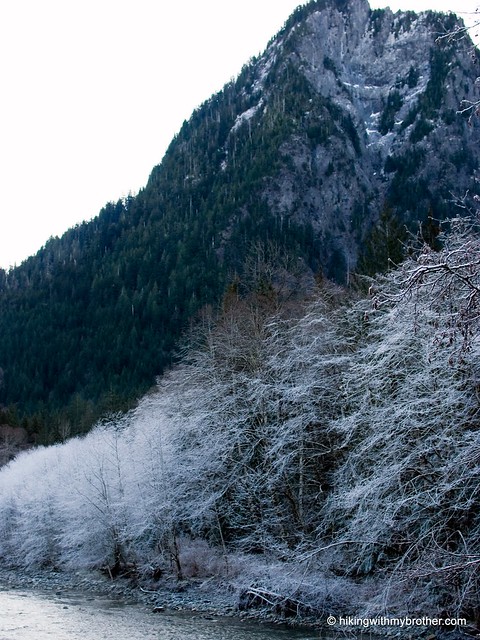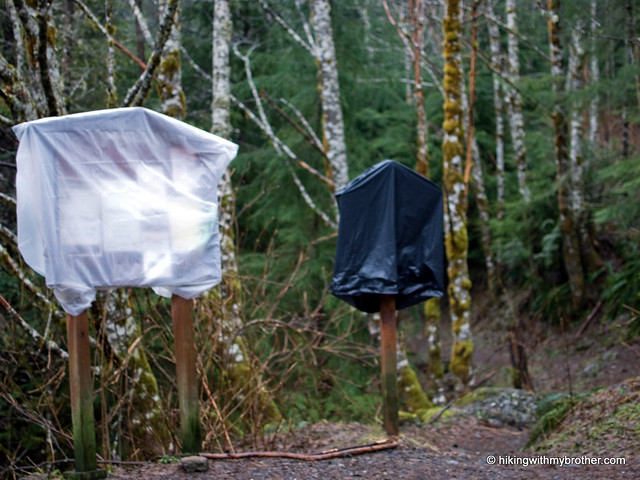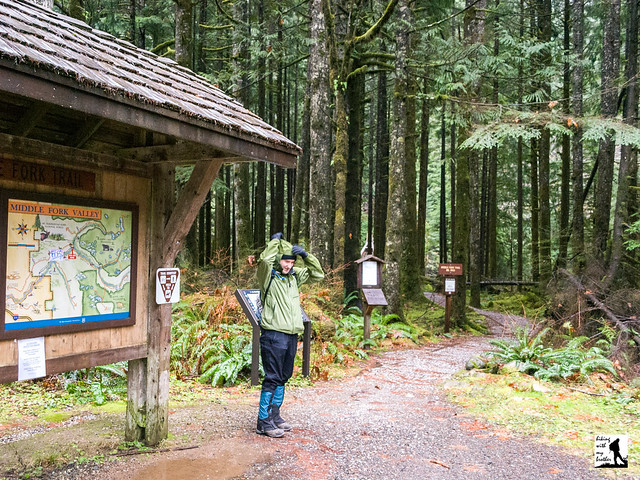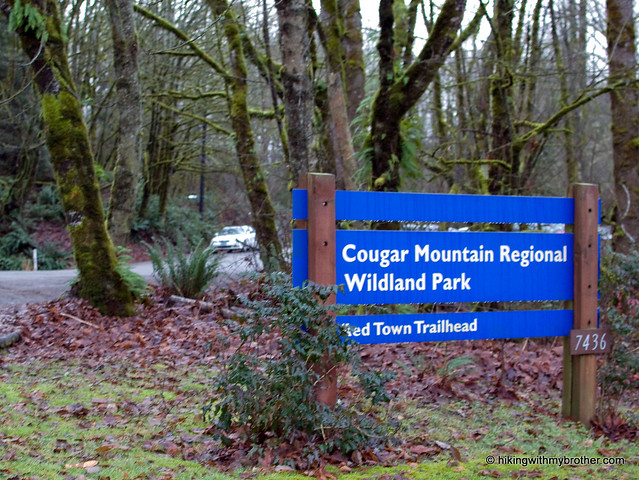Our Hiking Time: 5h
Total Ascent: 700ft
Highest Point: 1800ft
Total Distance: 9.5 miles
Location:
N 47° 35.2200, W 121° 28.0560
Required Permit:
Northwest Forest Pass
Difficulty: Easy

The Middle Fork Snoqualmie is once again open and after our trip up to
Tin Cup Joe Falls, we were itching to do some more exploring in the area. One never knows when the road will wash out again, and we want to get as many hikes in while we can. Before we knew it, we were trekking down a former logging road in search of Otter Falls.
The hike begins at the Taylor River Bridge at the end of Forest Road 56, sometimes also called the Lake Dorothy Road, or Lake Dorothy Highway. Back in the 1950s

, there was an effort to ram a road up through the river valley to connect North Bend to Skykomish. The route was to follow the old Taylor River Road, built by loggers to truck lumber back to Seattle. Evidently, some work was done to facilitate the project – mostly bridgework and some dirt roads cut – but it was ultimately blocked by the creation of the Alpine Lakes Wilderness. Today the Taylor River Road is but a whisper of the logging road it once was and might have remained had the construction continued; instead it feels like the quiet footpath many people hoped it would become.
After you park and gear up, cross the bridge and keep to the right at the Y in the trail. Enjoy a stroll next to the alder-lined Taylor River. Craggy Mt. Garfield makes an early appearance on the other side of the river, eventually yielding the stage to Treen Peak. After three leisurely miles, you’ll hit Marten Creek and what is known as Martin Falls. Small but pretty - note the greens and oranges of the rocks that can be seen in the pool below the falls. If you have adventure on your mind, there is an old bootpath on the far side of the bridge leading up to
Marten Lake, a little over a mile upstream.
Pushing past, we made for Otter Creek is a little over a mile up the trail. Keep an eye for the

“Otter Falls” sign, or for a cairn letting you know to head up. There isn’t much of a formal trail, it’s a short uphill battle to get to the falls, so just chose the path of least resistance. Otter Falls can be seen once you reach the top – it’s tempting to head straight for them, but resist the urge and instead veer toward the right of the falls for an easy place to cross the creek and avoid the brambles.
As impressive as the falls are from here, you can really only see about half of it. Otter Creek slides almost half a mile down the exposed granite to fall into Lipsy Lake below. Linger here for lunch or, if you haven’t had your fill of waterfalls just yet, head back down to the main trail and push onward. About a half-mile ahead you’ll reach a sturdy concrete bridge, perhaps a remnant of the Lake Dorothy Highway project that never was. The bridge spans the very cleverly named Big Creek and showcases Big Creek Falls. Although it lacks the serenity of Otter Falls, in some ways Big Creek Falls is a little more engaging. The angle of the rock is a bit steeper, increasing the speed of the water and making things more dramatic. Check them both out and let us know which one you like better.
The trail is not too long, and there isn’t much in the way of elevation,

making it an easy hike without too much company. Despite being relatively close to Seattle, the Taylor River Road feels remote and much further from civilization. This is one to take some less experienced hikers on to give them a whiff of the wilderness. It is also easy to extend your hike beyond Big Creek Falls by pushing on to Snoqualmie Lake, though be warned that it is only a few miles, the lake is roughly 1500ft higher in elevation.
To get there, take Exit 34 off I-90 and take a left on 468th Ave. Follow the road past the truck stop for about a half-mile until you reach SE Middle Fork Road, also known as Forest Road 56. Turn right onto the Middle Fork Road and follow the twists in the road until the pavement runs out. Continue on FR 56 for 12 miles, crossing the Taylor River. Once across, keep to the left for another quarter mile to the end of the road and the trailhead. -Nathan

 To remind everyone of sunnier days, I saved a photosynth that I put together this summer from the vista of Kendall Peak. I took the photos for this synth as we walked north along the ridge to try an capture what it's like to traverse the peak. To the east, the mountain drops into Commonwealth Basin and rises to Snoqualmie Mountain and Guye Peak. To the west is Rampart Ridge and Alta Mountain. Snoqualmie Pass ski area, and Mt. Rainer are visible to the south, and Red Mountain and the horn of the Mt. Thompson cut the sky to the north.
To remind everyone of sunnier days, I saved a photosynth that I put together this summer from the vista of Kendall Peak. I took the photos for this synth as we walked north along the ridge to try an capture what it's like to traverse the peak. To the east, the mountain drops into Commonwealth Basin and rises to Snoqualmie Mountain and Guye Peak. To the west is Rampart Ridge and Alta Mountain. Snoqualmie Pass ski area, and Mt. Rainer are visible to the south, and Red Mountain and the horn of the Mt. Thompson cut the sky to the north.















